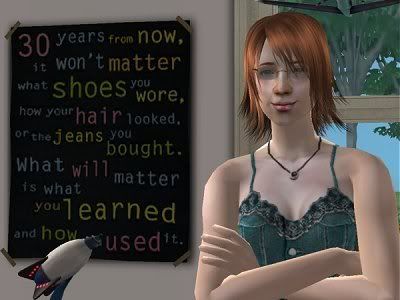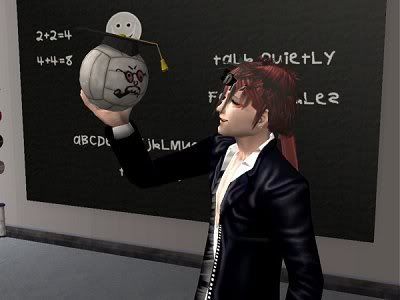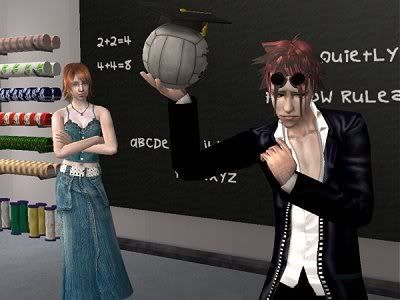
If style and voice are how you say things, plot is what you say. A plot is, basically, what happens in the story.
Plot and Characterisation are, to me, interlinked, but some stories are mostly Plot Driven and others are Character Driven. Some have an equal amount of both, and some are Idea Driven.
I am generalising here, Literary fiction tends to be almost completely character driven, ie, it's all about the character and how the events affect that character, and the growth of that character.
Genre fiction tends to be plot driven, with character. This is also a gross generalisation, because romantic fiction tends to have more character (how they feel), whereas crime fiction tends to be more about story (the crime and how its solved). Science Fiction, especially of the pulp kind, tends to be ideas driven (A really cool idea, what if x happens? then a story built around that).
No type of story is better than another, in my opinion, although debate can rage. For ever. It's moot, though. Writers like writing differently, and readers like reading different things. There's room for all of it.
Ice Station, by Matthew Reilly, is mostly plot-driven. 1984, by George Orwell, is mostly idea-driven. Shakespeare's MacBeth is character-driven. Raymond E. Feist's Riftwar saga covers a combination of the three.
Actually, all books and stories have a combination of all of the above. It's impossible to have any story without a character in it. But a plot-driven character is more likely to be driven by events, and the resolution is in the events. A character-driven story, on the other hand, will obviously have a plot (although not always), but the story is more about how the events affect the character internally than how the events are resolved.

Whatever type of story you prefer to write, there are two things to remember when it comes to stories.
- Stories should have a beginning, a middle and an end.
- Characters and plot should be internally consistent.
Beginning, Middle, End.
With many thanks to Kim Wilkins and Louise Cusack who first explained this particular structure formula for me, in their own ways. Beautiful, strong, talented women who write wonderful books. Drop by their sites and have a read of their books. :-)
This sounds bleedingly obvious, but I think people would be surprised to know that this is one of the most broken rules of structure. Some books have a terrific beginning, and then trail off with their endings - or worse, don't have an ending at all. They just stop.
Generally, the "beginning" is the first 10 - 15 percent of your story and the "end" covers the last 5 - 10 percent, or less in some cases, sometimes just a page if the story calls for it. The beginning is the place where you introduce your characters and set up the events for the rest of the story.
At a point, an event will happen to the character that sets up what is going to happen for the rest of the story. This is a turning point, where the character realises that he or she will have to go along with what's happening, or that they will never be the same, or that life has changed, or that danger is afoot.
Then begins your "middle", or the meat of the story. This is the part where all of the "stuff" happens. This continues until the climax of the story, which could be said to be the "beginning of the end." In fact, you may have many mini-climaxes within the story, this ramps up tension, but it is the major "it's all downhill from here: from this point, there is nowhere to go but down, or up."
Then comes the end. This is the denouement, the conclusion, the bit where it's done, and dusted, and you have a happy ending, or not. In a plot-driven story, this would be the point where the bad guy either is caught or gets away. In a character-driven story, this is the point where the character overcomes their demons, or not, and they go on to have a better life, or they kill themselves. Or whatever.
Please note: "end" doesn't necessarily mean "resolution". A story can be resolved, but not ended, or ended without everything within the story being resolved (this is especially true in the fantasy genre where trilogies can be the norm).

Let's use the War of The Worlds as an example, book, tape or either movie version, it doesn't matter, the principles are about the same. This is, in most of its forms, a plot- and ideas-driven story, rather than character-driven. We know this especially as the denouement is of the "deux ex machina" type: an event outside the character, completely out of the character's control, is what ends the story. The Spielberg version attempts to bring in character-related story, but at its heart Orwell was always ideas-driven, often brilliantly so (NB: spoilers of the story follow).
Beginning: Introduction of the characters, and the events that lead up to the Martian Invasion. In the book, and audio version, this would be the "No one would have believed that we were being..." etc., in the movie versions, the introduction of the main characters. This continues until the landing of the Martians themselves. You could say that the deaths of the people who explore the spaceship's crater is the point where the middle starts.
Ending: The climax of all versions of this story is the point where the reader, and the characters themselves, believe that it is all hopeless, that there is nothing that can be done, and that the human race is irrevocably doomed. That it is all downhill from here. Then, of course, the denouement is the realisation that this is, in fact, not the case because bacteria is stronger than Martian.
To use my A Continent Too Far story as another example, I've used Isabeau's psychological change, as well as the events, as benchmarks for beginning, middle, end. This story is character- and story-driven. Story is important, but so is character. This is what I like to read, so it's mostly what I write.
The beginning in that story is Isabeau's telling of her childhood, up to her family's deaths. At this point, she goes from being an innocent to an unintentional victim.
The beginning of the end, events-wise, is during the attack on the centaur camp and the events that occur out of that. The end is her decision to carry on. There is not a total resolution of the story (she still has many questions unanswered) but it is an ending, nevertheless, as she has gone through a full cycle psychological change, and even if I hadn't continued the story, the reader knows she has taken control of her life, and will do something about her circumstances.

Internal Consistency
This refers to both story and character, and also to world building in the case of genres that have that component.
A world can have a fantasy component such as, say, the sky is rose pink. However, this is "normal" for this world, so it would be unnatural and inconsistent for the characters remark on it as if it's something special. I mean, how many times do we run around going, "Wow! The sky is blue!" Generally, we don't. In fact, unless it's a special type of blue, or it's been raining for six years and we've forgotten what it looks like, or we're telling our kids the colour, we don't even notice it. So, we need, as writers, to communicate this in some way without being obvious about it.
A character can act "out of character": in fact, this is where a lot of stories come from. Having said that, if people act out of character, there are usually reasons behind that. They can be:
- That they aren't, in fact, acting out of character at all, that everything we've seen so far, up to this point, was them pretending to be something they weren't. There should be clues in the writing of this, though.
- That they have just gone through a notable event, and decide to throw caution to the wind, or, alternatively, to be more disciplined than usual.
- That they are dealing with some pretty extreme circumstances.
Having said that, extreme circumstances generally don't make people act out of character. What they tend to do, instead, is simply reveal more of our character, ie, how we act in extreme circumstances. We don't suddenly go from one person to another. Instead, we tend to become a more exaggerated example of who we are. So, a very religious person may become a religious nut, or completely lose their faith. But, the person who lost their faith will still find it difficult to shake off previously strongly-held beliefs, so they won't become a morally loose cannon instead.
An example of what I'm talking about:
Betty is in love with Bob. Bob wants to woohoo, but Betty is a virgin and not ready for this, yet, so she tells him this and continues to refuse whenever he brings the subject up.
Bob, however, is a dirtbag, and one day, gets sick of being fobbed off so he tries to have Betty woohoo with him, sans permission.
Fortunately, Betty's best friend Frederick decides to visit her at just this time, and in a dazzling show of heroism, tells Bob what's what and violently shows him the door.
In an intense show of gratitude, Betty woohoos with Frederick instead and they have a rollicking old time.

This is a completely inconsistent scenario, as Betty is originally written.
So, what is wrong with it? Well, Betty's reasons are given as "a virgin not ready to woohoo."
Yet, when she is almost raped (a traumatic event enough to turn any woman off woohooing for a long time), she immediately jumps into bed with her rescuer. Let's ignore the misogynistic fantasy connotations of this scenario for a moment and focus on the psychology. A girl who is "not ready" and is strong enough to say so, and strong enough to fight if someone tries to force her, is not going to do it with anyone until she is, and an attempted rape will not make her any more ready.
So it's internally inconsistent for her to immediately jump into bed with Frederick just because he helps her out and she needs comfort. She stands up for herself. She is not a lily-livered milksop who gives in at the slightest hint of approval. And she doesn't want to.
So, unless the writer has previously shown the reader that, although Betty is telling Bob she's not ready, her real reason is that she's really in love with Frederick and has been fantasising about him for years, she is not likely to act this way. And even if she has been in love with Frederick for years, she is more likely to be embarrassed that he saw her like that, not turned on.
Back
Next - Grammar
Comment on this tutorial
Story Links
Home




